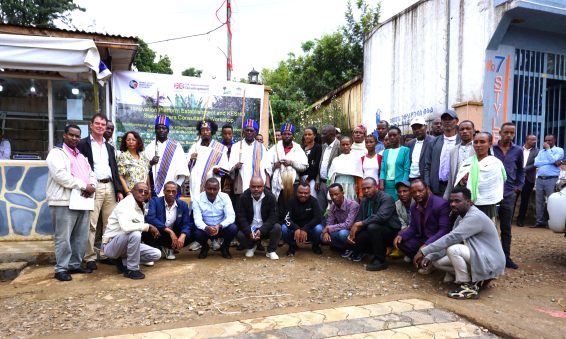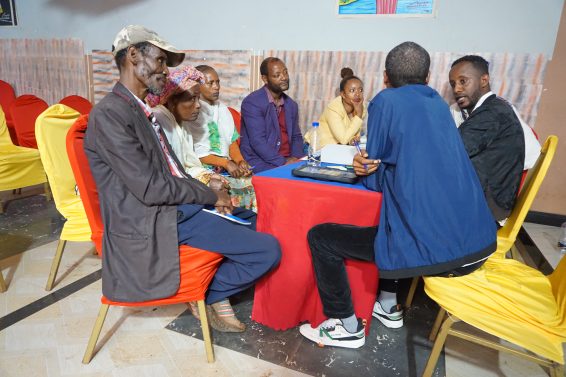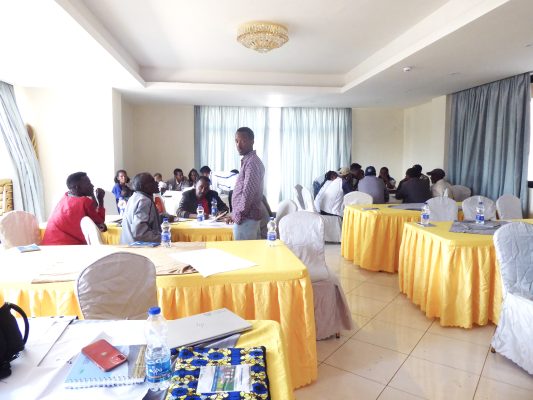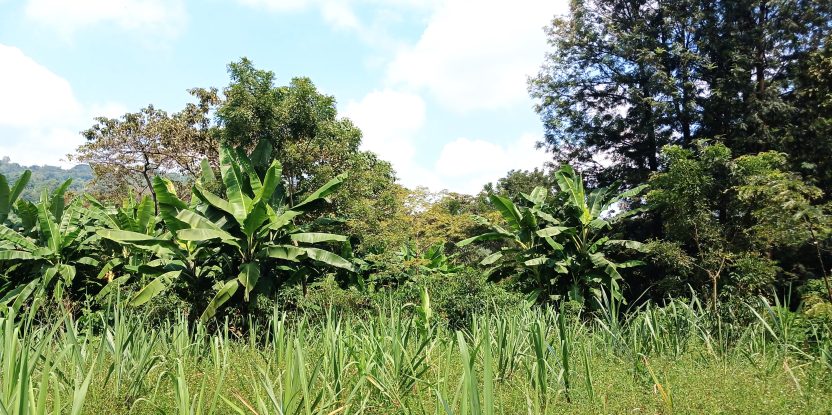In early October, a three-day workshop on land use scenario building workshop was held in Dilla, the heart of Ethiopia’s Gedeo Zone. Organised under the Center for International Forestry Research and World Agroforestry (CIFOR-ICRAF) Multifunctional Agroforestry for Enhanced Biodiversity, Improved Livelihood, and Resilient Landscapes in Ethiopian Highlands project, this event brought together farmers, cooperative representatives, traditional leaders (Aba Gadas), young people, government officials and researchers from Dilla University. Supported by the UK Government and in collaboration with the Global Center on Biodiversity for Climate (GCBC), the workshop was an effort to foster collective visioning for the future of the region’s land use.
At the core of the discussions was the kesho participatory scenario modelling tool, a Swahili name meaning “tomorrow”. This tool encourages participants to envision various land use futures, weighing the outcomes of present-day actions against the possibilities that guided interventions might unlock.
Robert Marchant, a professor at the University of York and a project partner, described kesho as a tool for crafting preferred futures, telling the participants, “The kesho enables us to imagine different futures whether continuing as we are or choosing sustainable interventions – and prompts us to think critically about the policies, mechanisms, the support and fundings required to move towards a sustainable and robust future.”
To anchor these discussions in the current landscape realities, Gebre-Yohannes Zenebe, a GIS and remote sensing specialist and PhD candidate at Mekelle University, presented insights on Wonago District’s existing biophysical conditions. His presentation highlighted changing patterns in spatiotemporal temperature and rainfall distribution from 1979 to 2016.
Topographically, the district is characterized by an undulating and rugged landscape, which is vulnerable to degradation without the traditional agroforestry system in the area. This information, paired with population projections based on Ethiopia’s 2.6 per cent growth rate, painted a vivid picture of the challenges and potential for reshaping the highland landscape for future generations.

Various stakeholders participated in the kesho scenario-building workshop. Photo by Eyob Getahun / CIFOR-ICRAF
Armed with tangible scientific evidence and their own on-the-ground insights, workshop participants discussed past and present realities in groups, as well as the evolution and challenges of Gedeo’s traditional agroforestry system.
They examined this system’s pressures from multiple angles, including climate, agriculture, social and cultural factors, market forces and policy issues. Together, they identified historical, present and emerging drivers of land use and land cover change, ranking the future factors most likely to impact the Gedeo Zone. Through collaborative scenario-building, participants sketched visions of both the futures they aspire to achieve and those they seek to avoid, proposing concrete strategies to achieve their desired future.
“This workshop was unlike any I’ve attended. It was very special,” said Kidst Birhanu, a participant from the Dilla Zuria District Agriculture Office. “In this workshop, we were the sources of knowledge and information; we taught one another and were the presenters. The organisers came to learn from us. All the workshops and trainings I attended before were top-down, with someone coming from somewhere and telling us this and that.”

A group discussion at the Dilla Kesho Workshop. Photo by Eyob Getahun / CIFOR-ICRAF
The workshop allowed the participants to reflect on past and present conditions while envisioning both desirable and undesirable futures. Reflecting on the workshop’s outputs, Gebre-Yohannes said, “The kesho is invaluable as a participatory research tool. It involves the community in research, making project interventions more sustainable for both the people and the local government. Active participation fosters a sense of ownership, as those engaged in discussions and solution-building are the very ones who will put these plans into action.”
Among several future drivers of change identified, the participants in Dilla prioritised two major factors: population pressure and low productivity. Based on these, they developed four different scenarios, each outlining potential outcomes and challenges. Through these identified scenarios, they collaboratively assessed the possible realities that each future might hold, sparking discussions on the pathways toward a more resilient landscape.

Participants discussing at the workshop in Shire, Tigray, assisted by Gebre-Yohannes (middle). Photo by Aster Gebrekirstos / CIFOR-ICRAF
A few days later, a similar kesho workshop was conducted in Shire, Tigray Region, focusing on the Laelay Koraro District in the North-Western Zone. The participants identified and prioritised various drivers of land use change, with unstable security and deforestation as the primary concerns.
Using these factors, they developed four scenarios, each exploring different possible outcomes for the district’s future. Reflecting on the workshop’s success, project coordinator and CIFOR-ICRAF senior global scientist Aster Gebrekirstos said, “I am thrilled we successfully concluded two intensive weeks of workshops and field visits in the South Ethiopia and Tigray regions. It has been wonderful, inspiring and productive. I’m deeply grateful to everyone involved, especially the farmers and partners in both regions, for their unwavering support.”
We want you to share Forests News content, which is licensed under Creative Commons Attribution-NonCommercial-ShareAlike 4.0 International (CC BY-NC-SA 4.0). This means you are free to redistribute our material for non-commercial purposes. All we ask is that you give Forests News appropriate credit and link to the original Forests News content, indicate if changes were made, and distribute your contributions under the same Creative Commons license. You must notify Forests News if you repost, reprint or reuse our materials by contacting forestsnews@cifor-icraf.org.
